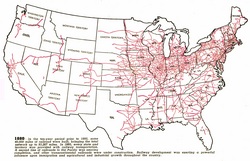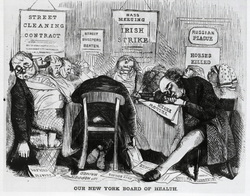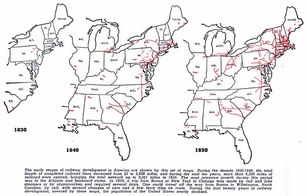Laissez-faire Capitalism

A map of the railroads in 1880
Before the Civil War, the government usually chose not to be too involved in the economy.
- In a Capitalist system, it was seen as not being the federal government's place to get involved in specific business affairs.
- During the war, the federal government started to get more involved in suits, cases and other formerly state-regulated issues.
- This was met with distrust from small farm owners, who thought that federal involvement replacing state involvement was hurting rather than helping the justice system.
- Large corporations from the East often preferred to work with the federal courts rather than the more hostile courts, especially those in the West.
- Congress was aware of the issues regarding interstate commerce, but for a while it did not have adequate information to make any kind of decision.
- "The measures heretofore proposed have been crude, and in the hearings given by Congressional committees the views presented have been so conflicting that it seemed to be impossible to shape a law that would meet with general acceptance... it has been found impossible to secure an agreement of the two houses upon its provisions" (National).
- According to Article I, Section 8, Clause 3 of the United States Constitution states that Congress "shall have Power To.. regulate Commerce with foreign Nations, and among the several States, and with the Indian Tribes." This clause, often called the commerce clause, states that Congress has the right to regulate interstate commerce.


